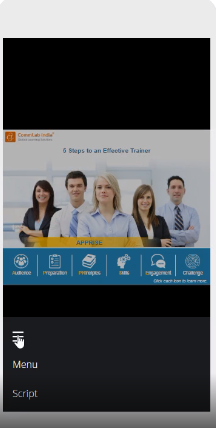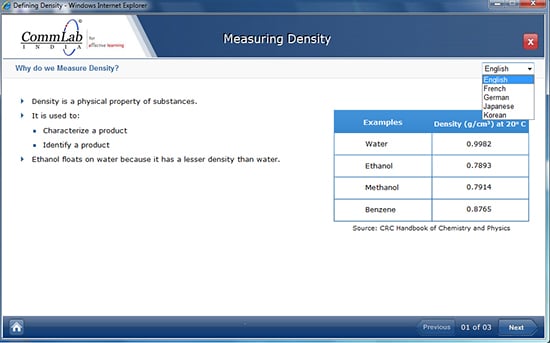A Review of Two Top eLearning Authoring Tools: Storyline and Lectora

Articulate Storyline and Trivantis Lectora, two well-known giants among eLearning authoring tools, each with its uniquely-carved identity as leaders in the eLearning space. But what makes each of these tools popular and the favorite of eLearning developers? If you’re implementing eLearning for the first time or planning to switch from an older version of some other authoring tool, this is a question for which you’ll need an answer.
Here’s a quick tip:
Never invest in an authoring tool based on a comparison with another tool. You’ll have to be clear with what you need to accomplish and then pick the tool that best matches your eLearning development need. Simply put, choose an eLearning authoring tool that’s right for the job.
→ Access Tool: eLearning Authoring Tool Finder
Storyline and Lectora for eLearning Development
- Developing rapid eLearning
- Supporting device-independent learning
- Converting Flash to HTML5
- Incorporating collaborative reviews
- Rolling out e-learning translations
Storyline and Lectora: Matching Your eLearning Development Need
Both Lectora as well as Articulate Storyline have stepped up the game with their latest desktop versions of Storyline 360 and Lectora Inspire 18. Here are some pointers to help you choose the tool that matches your eLearning development need.
1. Developing Rapid eLearning
Considering that most organizations need training strategies that can keep pace with the rapid plans of expansion and global growth, rapid eLearning is the need of the hour. Both Lectora and Storyline make good choices for rapid eLearning development. Templates play a crucial role in rapid eLearning by speeding up development time and thereby cutting cost.
The Content Library 360 in Storyline has templates, characters, and over 4.5 million photos, videos, icons, and illustrations. Templates are available in 4:3 and 16:4 ratios which should serve most of your needs.
In Lectora Inspire 18, a range of templates have been included on the Getting Started page. These templates have been designed in partnership with Faster Course. You have customizable templates for linear and non-linear navigation, audio/video syncing, and developing assessments, interactivities, and accessible eLearning. Lectora 18 also offers integration with eLearning Brothers stock assets library that includes over 2 million graphics, images, templates and more.
2. Supporting Device-Independent Learning
It’s a responsive world, and modern learners are no longer restricted to learning on desktops. They would love to switch seamlessly between various mobile devices and continue learning on those devices. That’s a reason many organizations are opting to convert non-responsive courses to responsive mobile-compatible courses.
Responsive design means eLearning content automatically adjusts itself to varying screen sizes and device orientations.
Storyline 360 offers a responsive player that adapts itself to the screen size of the learner’s mobile device, but the content on the slide maintains the same aspect ratio.
The screenshot below shows a course developed in Storyline. Notice how the content does not expand to fill the screen of the mobile device.

In truly responsive eLearning, you wouldn’t notice the black space around the screen content as it would have automatically adjusted itself to fill the screen of the mobile device. If you are looking for truly responsive learning using a tool from the Articulate family, try Articulate Rise 360.
When it comes to Responsive Course Design (RCD), Lectora Inspire 18 (desktop version) as well as Lectora Online (online version) offer support for responsive course design that facilitates device-independent learning. Responsive course design in Lectora involves mapping to breakpoints that represent layouts for desktop, tablets and smartphones. Breakpoints for mobile devices such as tablets and smartphones are available for the portrait and landscape modes. You create content for one breakpoint and that automatically adjusts itself to the subsequent breakpoints.
Lectora has an RCD inheritance feature whereby changes made in the desktop view move to the tablet view, and then from the tablet to the mobile phone. It is possible to override this feature.
In Lectora Inspire, the course and content automatically adjust to any screen size and orientation. Also it is possible to customize the content and onscreen elements according to each view (desktop, tablet or smartphone) using Lectora.
Lectora also offers vertical scrolling. So, even if you have a lot of onscreen content, you can fit it on the screen of your mobile device, without making it look too cramped. Learners can simply scroll down to view more content. Though Storyline offers vertical scrollbars, content clarity would be lost when you try to fit heavy text on devices with smaller screen size. Also you cannot tweak content according to the screen size/orientation of various mobile devices.
Authoring Tool Finder
Find the Right Authoring Tool, Whatever Your Requirement.
- Enables hassle-free decision-making
- Offers ideal authoring tool options
- Boosts your productivity
- Understands your custom eLearning needs
3. Converting Flash Content to HTML5
With the end of Flash just around the corner, you can no longer postpone your decision to convert Flash-based eLearning to HTML5 (considering that you would like those courses to remain accessible to your employees).
Both Storyline 360 and Lectora 18 are good tools to serve the purpose of converting Flash to HTML5. Storyline is definitely capable of replicating Flash-like interactivities and has an intuitive PowerPoint-like interface that makes it easy for developers, especially beginners. If you are looking to recreate simple-to-medium interactivities from Flash to HTML5, Storyline is an amazing tool and serves the purpose. You could also customize these interactivities. In some cases where recreating an interactivity is not possible, your eLearning partner can suggest the next best alternative.
Lectora on the other hand offers the capability to design customized interactions. By allowing the addition of custom code, Lectora makes it possible to replicate complex Flash-based interactivities. If you require heavy customization, Lectora is the tool to opt for. However, Lectora does have a steep learning curve, and you would need developers who have the required expertise.
4. Incorporating Collaborative Reviews
In certain eLearning projects where there are many subject matter experts (SMEs) and stakeholders involved in eLearning course review, you need an online platform that lets reviewers collaborate and ease the tracking of review.
Storyline 360 made a major update to ease quality assurance (QA) checks in eLearning development. And that was the inclusion of the Articulate Review feature. Let’s assume you need a course translated and localized. The onscreen text, text on images, video, and audio needs to be captured, translated, and then integrated back into the Storyline timeline. This process is time consuming and requires extensive QA. By including Articulate Review, it is now possible for multiple reviewers to check the course on an online platform. This helps streamline the review process and in turn, roll out effective eLearning translations.
Similarly Lectora offers ReviewLink to facilitate collaborative reviews. Using ReviewLink, you could invite reviewers by adding their e-mail id and reviewers would be able to view the list of courses they are required to review. This definitely makes the process of reviewing as well as collating review comments easy.
5. Rolling Out E-learning Translations
With companies expanding globally, there definitely is a need to develop translated versions of eLearning courses.
Storyline, even in the earlier versions offered the capability to export text for translation and import the translated text to rollout eLearning translations.
Similar to Storyline, Lectora can export content that requires translation into a single file and then import the translated content into the layout of your course. If you would like to give learners an option to take eLearning courses in the language of their choice, the switchable interface feature in Lectora allows you to do just that.

Known issues with Lectora Inspire as far as eLearning translations are considered is audio in Portuguese not functioning well and also there seems to be a problem importing Flash Files in the French language.
This is not a comprehensive list of eLearning development needs, and there’s more that can be added to this list. And your choice of authoring tool could differ depending on that need. One important aspect you should check for is the responsiveness offered by the tool. To explore responsive eLearning, download our eBook.





